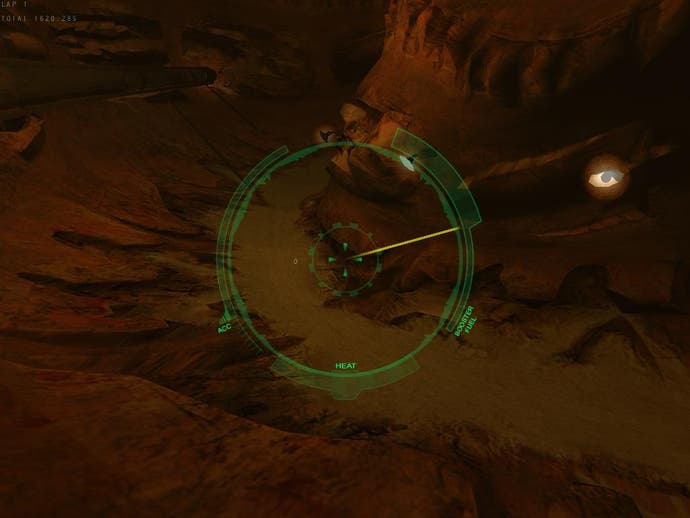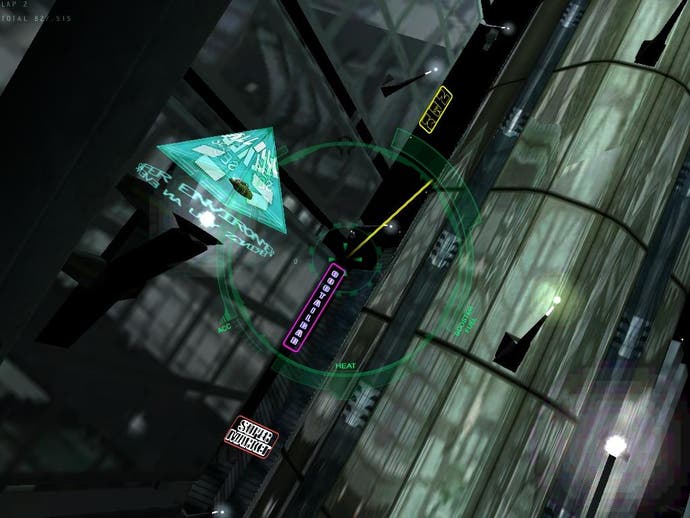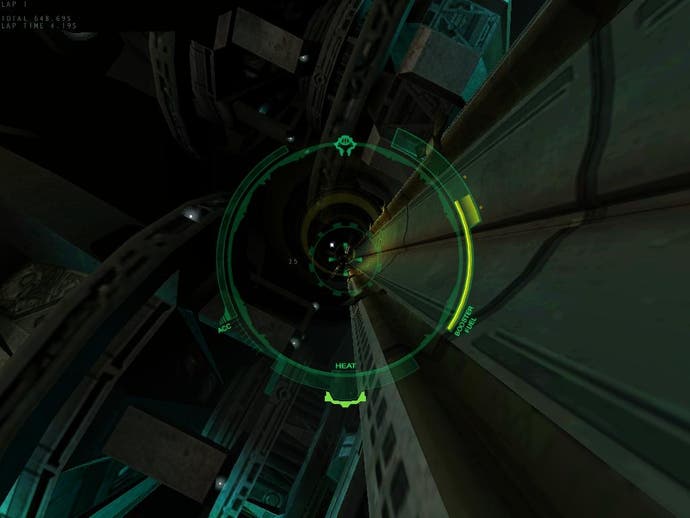Bo Andersson of GRIN - Part One
Interview - we talk to Sweden's GRIN about the company's origins and philosophy, and how it applies to their impressive debut game "Ballistics"
The last couple of years have seen something of a boom in the Scandinavian gaming industry, with titles such as Massive Entertainment's 3D real-time strategy game "Ground Control" and Funcom's graphic adventure "The Longest Journey" proving popular with critics and gamers alike. Meanwhile companies like Sweden's Starbreeze Studios and Southend Interactive are hard at work on promising looking debut games.
The latest developer to emerge from the frozen northlands is another Swedish company, GRIN, which is currently putting the finishing touches to "Ballistics", a visually stunning high octane sci-fi racing game. We caught up with CEO Bo Andersson to find out more about the company and their philosophy...

Arctic
The current boom in Swedish game development is partly a result of the country's highly active Amiga scene of the last decade. "The people who grew up with Amigas and the C64 are now in their mid twenties, and often they are still interested in putting together their own material on computers", Bo told us.
"I may sound like an oldie here, but I believe that in the Amiga days people altered the games and software a lot more than now. People looked at games and saw a chance to do the same from their own living room, while today it takes a heavily financed twenty man team to get close to a game. These people have now joined up with investors or publishers, got their university education or degree from art school, and gone after what they always wanted."
The now defunct tech stock boom also helped, because for a while "investors dared to go with maximum risk projects, which enabled a few studios to get started without a publisher". The result was a thriving gaming industry, and Sweden was perfectly placed to take full advantage of it. "Being based in Sweden is good because we have got good infrastructure or info-structure, with a lot of Internet presence by ordinary people. This is extremely good for recruiting and marketing. Another advantage is easy access universities which we can communicate and swap resources with."
And disadvantages? "The [only] bad thing is the weather!" Despite the cold weather and short winter days though, Bo told us that "I would not position my company anywhere else. Many publishers don't recognize Sweden as a high tech community just yet, but we have one of the highest innovation per capita ratios in the world."

The Mission
But despite the gaming industry's rapid growth over the last decade, and the recent boom in new areas such as Scandinavia and Eastern Europe, all is not well, and a spate of take-overs, buy-outs and share price collapses have demonstrated this over the last couple of years.
"Having studied the gaming industry for a few years, I tried to nail down the weaknesses of today's productions. Why do publishers' stock prices go down abruptly with only modest swings in demand for their titles, and why must it take over two years to complete a full game for the PC? Why do we see so many clones, and why aren't we looked upon as a serious industry?"
The answer Bo came up with was rather surprising. "I came to the conclusion that the developer was to blame. The developer is the risk generator. That's why so many publishers go with already proven concepts (clones), and that's why it takes two years to produce a normal title. And the longer the money is out there, the higher the risk."
"So what I did was to gather a few key people to form GRIN, and for over a year we worked out the organizational style of an efficient developer. Our mission was to build a game developer which publishers could trust to do three things - be on time, on budget, and doing the most entertaining game of its kind. We decided what resources must be present, and how the production must be planned."
"Ultimately we decided to look upon our game developer as you would any other high tech company - with dead serious involvement, and with the sights set on a competition where each battleground has to be chosen with care. Coupled with good work management and a few secret tricks up our sleeve, this enabled us to kick start GRIN, and to produce Ballistics in six months."

TQM
Developing a quality game in just six months is something of an achievement in these days of rising costs and development times, so how did GRIN manage it with their first title? "Chose your battleground with care, and use JIT and TQM - that is the 'Just In Time' and 'Total Quality Management' models".
"These are old Japanese concepts from the car and electronics industries, which are easy to grasp but very hard to implement", Bo explained. "The JIT is all about re-doing as little as possible, and timing different parts of the production with each other. This is something that I found very few developers spend time with. 'It takes the time it takes' is a very much used phrase - I don't buy that."
"TQM requires everyone in the team to be fully dedicated and interested in what they are doing. Each member of the team has to see and understand what he is adding to the full game - it must be quality assurance on every detail and by every person. Quite a few people say they work for fun, but they end up doing it for the pay cheque. The day you wake up and feel that you don't care about the part you are doing the TQM crashes. At GRIN, TQM is all about knowing each person and what makes them tick. If you like what you do and add discipline to that, then you have a golden gate to success."
"TQM will seldom work in western countries when companies grow to a certain size - too many scientific studies show that, and game developers, believe it or not, are also human. This is why I think a lot of projects go about and never gets done - over-sizing kills the TQM. Growing is not always the best way to become a top developer - I think a lot of developers believe they can solve their pipeline problems by adding more people."
"To grow efficiently you need a correct and evolving execution plan and structure within the company. You just have to look at IT companies for a few bad examples - I've never seen so many people doing so little in the end. Get the right people in the right boat I'd say."

Diesel Powered
Obviously the key to creating a successful game following these models is the engine that forms the core of it, and many projects have floundered or been delayed because the engine which powered them was constantly evolving during the game's production, forcing large chunks of the game to be redesigned or recompiled.
As Bo told us, "first we needed a technology that could take care of any kind of game, so that GRIN would not be left in a technology-developing hole". And instead of just leaving the programmers to get on with it, GRIN mapped out what their new technology should be capable of before letting the coders get their hands dirty. "We decided that a 3D artist and game producer should set the limits and demands on the game engine, and the programmers then had to live up to that specification. So was born the Diesel Engine."
"The Diesel Engine is DirectX based, and thus can be used for both PC and Xbox. We have a very object based and scaleable architecture which enables new features to be added easily. If an artist wants to try out a new effect or environmental setting this is done through a viewer application we built, so there is seldom need for any time consuming re-compilations and such."
Diesel is powering GRIN's debut game, a high speed futuristic racing game called "Ballistics", and judging from what we have seen of it so far it's certainly looking impressive. "The Diesel Engine is very much the key to our game's looks, and it has an important role when it comes to keeping our production time down to minimum as well."
But what about the game itself? Well, we will be covering that next week in the second part of our interview with Bo Andersson, so be sure to come back for more!

